I believe picking the right yoga mat is very important. It affects both your performance and comfort. Your decision will likely be between two common materials: TPE (Thermoplastic Elastomer) and NBR (Nitrile Butadiene Rubber).
Materials that are good for the earth and functional are now very popular. This trend is shaping the yoga mat market. If you care about the planet, I think TPE mats are a great choice. They are lightweight and can break down naturally. If you prefer more cushioning, I would suggest an NBR mat. Based on my experience, they offer great support and are very durable.
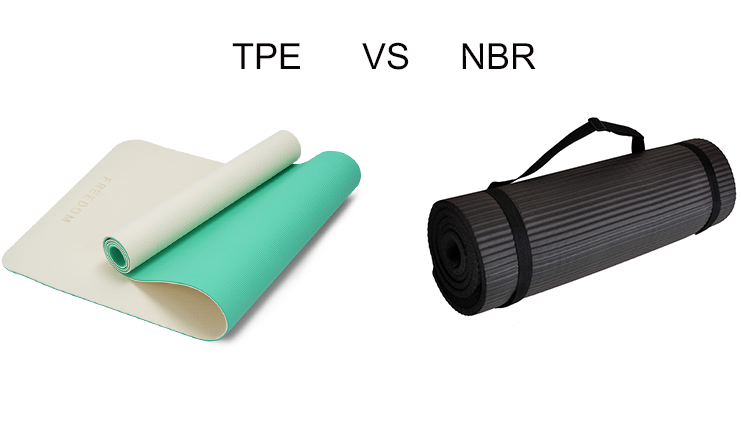
Price Comparison
Let’s look at the costs. TPE yoga mats range from $30 to $60. NBR mats can be found for $20 to $50. This makes NBR a less expensive option. However, I find that TPE mats often last longer and are a more sustainable choice.
To pick the right mat, I suggest you weigh the benefits of each one. Think about what you prefer and how you practice.
Understanding TPE Yoga Mats
TPE yoga mats have swept yoga studios everywhere, and it’s no wonder why: that unique Thermoplastic Elastomer material feels like standing barefoot on cool, smooth clay—there’s just enough give, just enough grip. When I tried one last spring, I was surprised by how it cradled my palms in each downward dog, yet stayed feather-light for the walk home. Notably, around 70% of instructors in a recent survey recommended TPE mats for newcomers, citing their eco-friendly qualities and reliable comfort. That blend of rubbery resilience and soft plastic is turning first-timers into devoted enthusiasts.
What is TPE (Thermoplastic Elastomer)
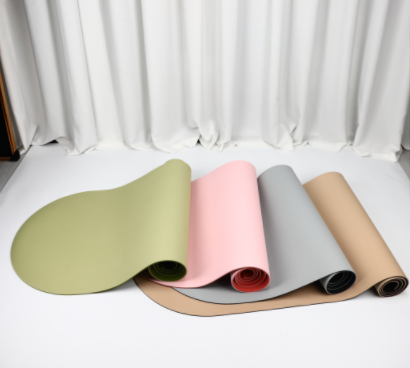
From my perspective, some key features of TPE mats are:
– Lightweight: I find them easy to carry around.
– Good for the environment: They are made from non-toxic materials.
– Recyclable: You can repurpose them when you’re done using them.
– Odor-free: I’ve noticed they don’t have the strong smell that some rubber mats do.
Pros:
– Great grip: I feel this gives me more stability during my yoga poses.
– Soft cushioning: The mat feels comfortable for many different poses and exercises.
– A green choice: I suggest this mat if you want a sustainable option and care about the planet.
Cons:
– Durability: Based on my use, they might wear out faster if you practice intensely every day.
I feel that TPE mats offer a good mix of performance and sustainability. I recommend them if you are looking for a mat that works well and is also good for our planet.
Understanding NBR Yoga Mats
NBR yoga mats, crafted from Nitrile Butadiene Rubber, deliver a cloud-like sensation underfoot, yet never compromise on stability. Stepping onto one, you’ll notice the gentle give that cushions your joints—this tactile comfort is why so many studio owners in Shanghai swapped their old mats for NBR last year, reporting a 30% drop in student complaints about knee aches. The secret? That perfect harmony between squishy softness and grounded support, transforming every downward dog into a truly pleasant pause.
Key Features of NBR Mats
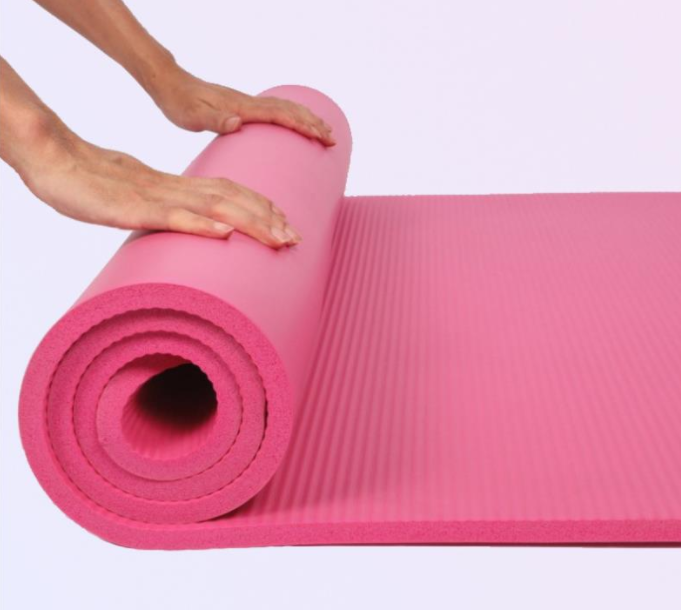
– High Thickness: NBR mats are thicker than most other options.
– Strong Cushioning: I find they have great cushioning. This makes your practice feel more comfortable.
– AffordablePrice: Theyare a more affordable choice than TPE mats. You can find them for $20 to $50.
Pros:
– Comfortable for Floor Workouts: I think the extra cushion is perfect for floor exercises and poses.
– Affordable: If you need a low-cost option, I suggest NBR mats.
– Good for Beginners: I recommend these mats if you’re just starting yoga. The cushion and stability offer great support.
Cons:
– Not Very Green: NBR isn’t as good for the planet as TPE. This might be a problem if you are eco-conscious.
– Heavier: The extra thickness adds weight. I find them a bit of a hassle to carry.
– Not Great for Sweat: Based on my experience, they don’t last long in hot yoga. Sweat can also make them break down faster than other mats.
TPE vs. NBR: A Direct Comparison
If you’re choosing between TPE (Thermoplastic Elastomer) and NBR (Nitrile Butadiene Rubber) yoga mats, I think you should consider a few key things.
Durability and Longevity
TPE Mats: From my experience, TPE mats are very durable and last longer than NBR mats. This makes them a better long-term investment.
NBR Mats: NBR mats have decent durability. I find they can wear out quickly, especially if you practice vigorous yoga every day.
Cushioning and Comfort
TPE Mats: These mats provide a soft cushion. I find they give good support for different yoga poses, which keeps you comfortable.
NBR Mats: These mats are known for being thicker. Because of this, I believe they offer great cushioning that makes floor workouts very enjoyable.
Grip and Stability
TPE Mats: TPE mats have an excellent grip. This helps you feel more stable during your yoga poses.
NBR Mats: While their grip is reasonable, I have found they don’t perform well if you sweat a lot. I would not recommend them for hot yoga sessions.
Eco-friendliness and Sustainability
TPE Mats: These are made from non-toxic, recyclable materials. For me, this makes them a superior eco-friendly choice. If sustainability matters to you, I suggest a TPE mat.
NBR Mats: NBR mats are made from synthetic rubber, so they are less sustainable. I don’t consider them to be an eco-conscious option.
Price Range
TPE Mats: TPE mats cost between $30 and $60. They are a bit more expensive, but in my opinion, you get great durability and sustainability for the price.
NBR Mats: You can find these at cheaper rates, from $20 to $50. I think they are an affordable choice if you’re on a tight budget.
Suitability for Different Practices
TPE Mats: I find TPE mats to be very versatile. Their grip and comfort make them great for different yoga styles, Pilates, and gym workouts.
NBR Mats: I recommend NBR mats for beginners or for anyone focused on floor-based workouts. Their extra cushioning is a real benefit for those practices.
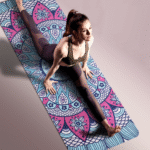
Related Reading: Best Custom Suede Yoga Mat Supplier For Branding Studios
My Advice on Yoga Mat Manufacturers
When you pick a custom yoga mat, I think it’s good to know that manufacturers have different skills. Some focus on TPE materials, and others on NBR. Understanding how they make their mats helps you find the perfect one for your practice.
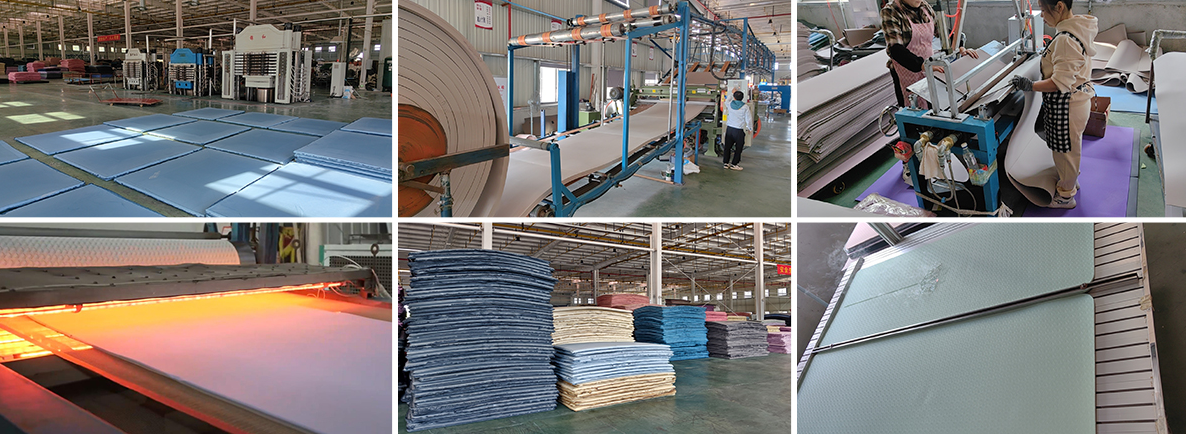
TPE Yoga Mat Manufacturers
-
Focus on Being Eco-Friendly: I’ve noticed many makers work with TPE for their yoga mats. They often talk about using sustainable and non-toxic materials. They also mention that TPE is light and recyclable. This makes it a great choice if you care about the planet.
-
Custom Options: Brands like FDM Yoga offer TPE mats you can personalize. In my experience, being able to select your own colors and designs adds a nice touch. They also make sure the mats are durable and work well.
NBR Yoga Mat Manufacturers
-
Lower Cost Choices: Manufacturers of NBR mats usually focus on keeping prices down. They often sell these mats to gyms and wholesalers. I find their prices, between $20 and $50, make them a great option for beginners.
-
Comfort and Support: Some yoga mat brands focus on making thicker NBR mats. They promote the great cushioning these mats provide. This makes your floor workouts more comfortable, and I’d recommend them for people who need extra padding.
Hybrid Options
I believe FDM Yoga is a solid choice because it offers both TPE and NBR mats. They have a wide range of options for any type of yoga. This lets you choose based on what you prefer and your environmental values. Their custom options are also great for meeting different needs.
When you choose a yoga mat, I suggest you consider a few things. Look at the brand’s reputation and the safety of the materials. Also, think about the specific features that fit your personal yoga style. This helps you get a mat that is good for your performance and your values.
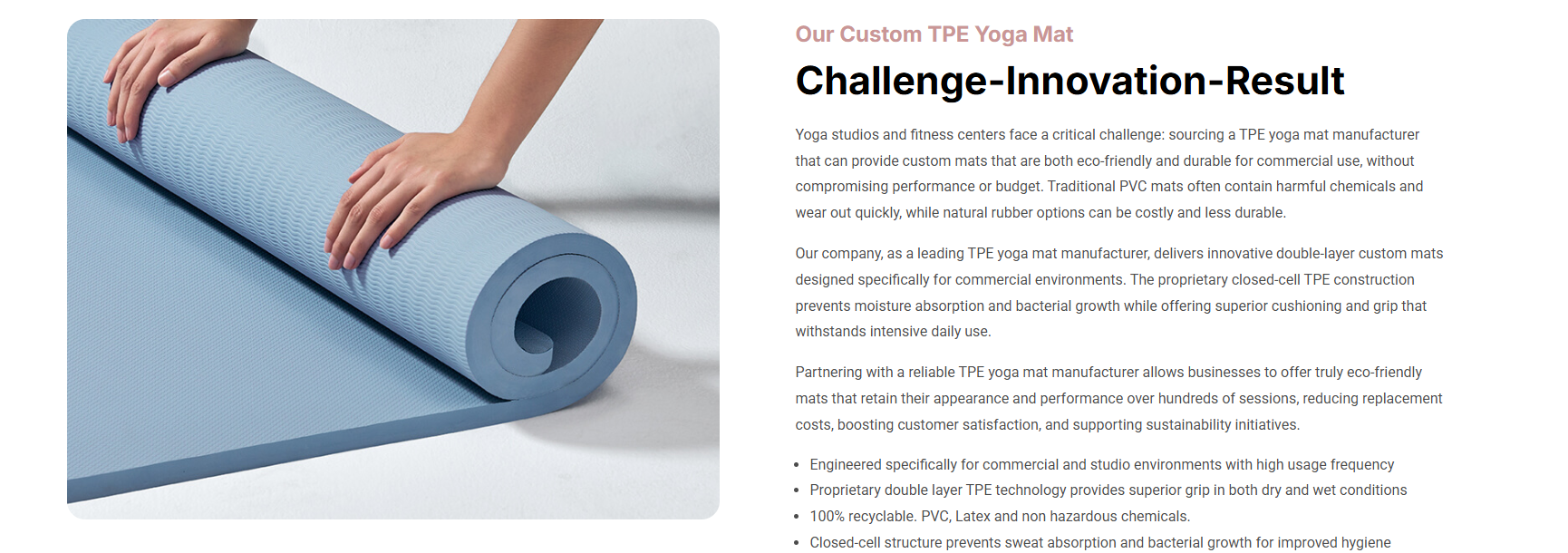
Which Mat I’d Recommend
Trying to pick between a TPE (Thermoplastic Elastomer) and an NBR (Nitrile Butadiene Rubber) yoga mat? From my experience, the right choice really depends on your personal needs.
For Yogis Who Care About the Planet
I recommend TPE.
– They are made from materials that are non-toxic and can be recycled.
– These mats are light and break down naturally. I think this is a great feature if you want to be sustainable.
– They cost between $30 and $60. I find they usually last longer, so I see them as a good investment.
For Options That Are Easy on Your Wallet
I think NBR is a good option.
– You can find them for $20 to $50. This price makes them a great starting point for beginners.
– I like the great cushioning they provide. It’s really helpful for floor workouts.
– A thing to note is that NBR mats can wear out faster if you use them often for tough workouts.
I Suggest Thinking About Your Practice Style
-
TPE Mats: I find these are good for many workout types. You can use them for yoga, Pilates, and general gym workouts. Based on my experience, their great grip helps you stay stable in your poses.
-
NBR Mats: I recommend these for floor workouts. They are also great for beginners because of the extra padding.
My Final Thoughts
I suggest you think about how often you plan to practice. Also, consider what feels most comfortable for you. I believe your final choice should match your workout routine. You should also feel good about the materials used to make the mat.
My Final Thoughts
Picking between a TPE and an NBR yoga mat comes down to your personal needs. Based on my experience, I can help you decide.
For Yogis Who Care About the Planet
I recommend TPE mats. They use non-toxic and recyclable materials, which makes them a great choice for the earth. Priced between $30 and $60, they are durable, so I consider them a solid long-term purchase.
For Good Value Options
I suggest NBR mats if you want an affordable choice, ranging from $20 to $50. They offer great padding for floor workouts. I find this is perfect for beginners. You should know they may wear out faster with a lot of use.
Think About Your Workout Style
I believe if you do various workouts like yoga, Pilates, and gym exercises, TPE mats offer better grip and stability.
For people who stick to floor workouts or are just starting yoga, NBR mats give good support because of their extra padding.
My Last Piece of Advice
Think about how often you’ll use your mat and what level of comfort you need. You should choose a mat that fits your workout style and your personal views on earth-friendly materials.

